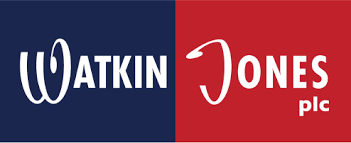I wrote this for myself in the middle of January ‘25 when the stock was trading around 20p and started buying quite heavily then. Still didn’t buy enough. I think this one has some more legs. Just recently they announced that they have £73m in next cash on market cap of £95m making the EV around £20m. Below is the write up from then.
This is NOT an investment advice!
Reversal to mean story (15 Jan 2025)?
The company has market cap of about £50m and net cash of £65m. as per H1 2024 results they have current assets of £285m and all liabilities of £211m making at technically a net-net.
Why so cheap?
They “forward sell” the real estate they produce, leading to a very capital light model with ROCE of ~20% or so possibly more if you think you don’t need the cash all the time. The forward sell means they buy some land which they are reasonably sure they can get planning permission for, they get the planning permission (this can take a year or more) they sell the land and the project going forward to an institutional investor (eg KKR, L&G or similar). The contract covers the building work (presumably at fixed cost with some variation). As they build, they get paid at milestones until it’s finished when they get a substantial rest of the money.
In 2022 they sold some projects at prices which were later shown to generate less gross margin than usual (due to inflation) ~10% as opposed to usual ~16-18%. That lead to operating margin evaporating and still being low.
If the operating margin went back to about 4-6%, they would be able to make normalised £10-£20m going forward. That would make it approx. 2 PE company – it used to move around 10PE in the past. Btw a general contractor can get around 2-4% ops margin (eg KIE, BBY, MGNS). The attraction of the WJG model is that they were earlier able to do ~14% ops margin.
The problem now is less inflation but rather the availability of money from investors for these projects. The expected rates of return for the investor are surprisingly low but they are very consistent and long running. The typical return is just 5%. Given that the guilts pay 4.4% or so it’s no wonder that investors are not so keen.
On the other hand there is a real scarcity of student and rental accommodation in the UK and rents are going up heavily.
The other problem are conditional liabilities in the form of remedial work required on older properties. The building safety act made them responsible for properties they built 30 years ago – wtf. Then they’re surprised nobody wants to build anything. They have put aside £65m to do the work, they already spent £10m and got another £10m back from clients and they’re trying to get more. I think the £65m was a “big bath” type of event where they added all sort of contingencies on top make absolutely sure they’ll not come back with more bad surprises. They will keep on doing the work until about 2027. I sort of expect there will be some little money left in that fund in the end.
Risks
Inflation and the forward buyers’ market (ie interest rates) are a bigger risk imho.
Inflation – if it picks up again and they forward-sell at bad prices, it will show on the P&L in the future. In the interim, they should be able to reach operating margin of 4-6% so PBT of £10-£20m. (They estimate 11-12% gross margin in 25/26 leading to about 4-6% ops margin)
Interest rates – no one knows obvs. They have other options like doing refurbs for money on older properties, wait and/or keep building on high conviction assets to take advantage of future market boost. If they don’t sell anything they still have a lot in the pipeline - £400m forward sold which needs to complete over 2+ years. They think they can survive not selling anything for 12 months. I suspect these sales can be lumpy so if nothing transpires for some months the share price could be hammered further yet. If they don’t sell.
They will get hit by the various (L)labour related increases – NI, minimum wages, let’s call it a £1.5m. Specially in the Fresh (property management) segment they are going to get hit hard.
Questions:
Fresh – why does it have 371 employees and largely losing money? 371 employees which on an average salary of £25k would amount to £9.2m cost. They claim revenue of that segment of £9.4m, gross profit of £6m, admin costs of £5.4m and op profit of 500k, how does that work?
Does the business model work only in a low interest rate environment? If so it’s a bad idea.
The Watkin Jones family still own about 4.4% of the company. This used to be worth tens of millions of pounds but now is down to a few million. Not sure this is important, suppose not.
The bet here is that in the medium term (1-3 years) either the forward sales market improves or the returns on these scheme improve due to narrow supply to the point where they are more attractive than riskless gilts.
Other writeups I found later:


